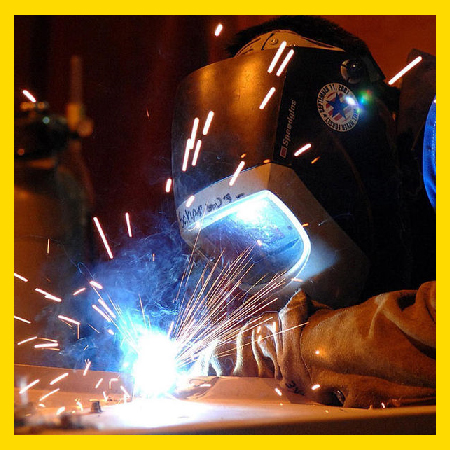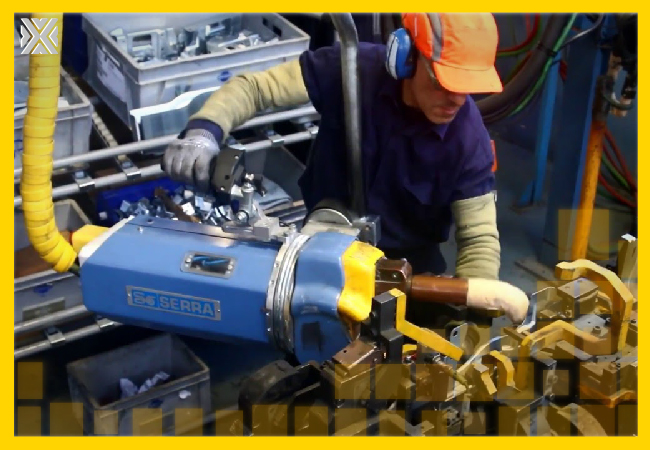Currency
December 05, 2018

Thanks to low operating costs, intrinsic mechanical properties, and the increased production of light vehicles, the global welding products market is set to surge, climbing from $11.82 billion in 2015 to $19.76 billion by 2025.1 The Asia Pacific and Europe regions are expected to contribute most significantly to this market growth, primarily driven by technological innovations, overall end-user growth and low production costs.
While robotic welding machines are now prevalent in North America and Western Europe, manual welding guns are still heavily relied upon throughout Asia, Eastern Europe and Latin America. Because they are roughly one-fifth the cost of robotic welding guns and offer significant advantages in terms of flexible manufacturing, manual welding guns will continue to be a key tool for automotive body-in-white.

With manual welding guns typically weighing between 60 and 92kg, they can pose a major challenge when it comes to operator fatigue and workplace injuries. With some units weighing as much as 135kg, a weight-management solution is necessary to make these tools even functional to operate.
A 2016 study conducted at an automotive parts production plant in Poland examined the ergonomic risk factors associated with the awkward posture of operating welding machines and the repeatability of movement by the operators.2
By examining 45 welding workstations and 291 postures assumed by the operators, researchers found a correlation between awkward physical loads and the deterioration of correct postures, increasing the risk for work-related musculoskeletal disorders (MSDs). Awkward postures, or unsupported positions that stretch physical limits, lead to compression of nerves and irritation of tendons.
In addition to awkward posture, the main risk factors of work-related MSDs are repetition, excessive physical load and duration of movement. These injuries eventually lead to lost productivity time, increased workers’ compensation claims and higher insurance premiums. MSDs, such as sprains or strains resulting from overexertion in lifting, accounted for 31 percent (356,910 cases) of the total cases for all workers in 2015, according to the U.S. Department of Labor’s Bureau of Labor Statistics.3 Private industry workers who suffered an MSD required a median of 12 days to recuperate before returning to work, compared to eight days for all days-away-from-work cases.
The economic impact of work-related MSDs has been estimated to cost upwards of $20 billion in workers’ compensation and as much as $80 billion in indirect costs annually.
A low-cost approach to achieving best-available ergonomics in the welding-product growth markets of Asia-Pacific, Eastern Europe and Latin America is through the efficient use of tool-support systems. Balancers and related suspension features make it possible for manual welding guns and other assembly tools handled by operators to feel nearly weightless. By not exposing workers to the strain of lifting and eliminating the possibility of welding gun drops, operator fatigue and instances of common injuries are greatly reduced and productivity and efficiency improvements result.
Manual welding guns equipped with balancers also offer advantages over robotic welding guns in applications where manufacturing flexibility is desired. In countries such as Brazil, a hybrid approach has been developed with robots utilized to manipulate the vehicle chassis and other large parts and manual welding gun stations strategically positioned where workers can perform spot welds on as many as five vehicles on the same line.
While this lean manufacturing approach can improve productivity and increase profits, researchers in Poland also noted that flexible and efficient production systems can lead to variability in the tasks performed by operators, potentially impacting their posture and furthering the risk of MSDs, furthering the case for efficient use of tool-support systems.
While robotic welding machines are now prevalent in North America and Western Europe, manual welding guns are still heavily relied upon throughout Asia, Eastern Europe and Latin America. Because they are roughly one-fifth the cost of robotic welding guns and offer significant advantages in terms of flexible manufacturing, manual welding guns will continue to be a key tool for automotive body-in-white.

Getting to the root of work-related MSDs
With manual welding guns typically weighing between 60 and 92kg, they can pose a major challenge when it comes to operator fatigue and workplace injuries. With some units weighing as much as 135kg, a weight-management solution is necessary to make these tools even functional to operate.
A 2016 study conducted at an automotive parts production plant in Poland examined the ergonomic risk factors associated with the awkward posture of operating welding machines and the repeatability of movement by the operators.2
By examining 45 welding workstations and 291 postures assumed by the operators, researchers found a correlation between awkward physical loads and the deterioration of correct postures, increasing the risk for work-related musculoskeletal disorders (MSDs). Awkward postures, or unsupported positions that stretch physical limits, lead to compression of nerves and irritation of tendons.
In addition to awkward posture, the main risk factors of work-related MSDs are repetition, excessive physical load and duration of movement. These injuries eventually lead to lost productivity time, increased workers’ compensation claims and higher insurance premiums. MSDs, such as sprains or strains resulting from overexertion in lifting, accounted for 31 percent (356,910 cases) of the total cases for all workers in 2015, according to the U.S. Department of Labor’s Bureau of Labor Statistics.3 Private industry workers who suffered an MSD required a median of 12 days to recuperate before returning to work, compared to eight days for all days-away-from-work cases.
The economic impact of work-related MSDs has been estimated to cost upwards of $20 billion in workers’ compensation and as much as $80 billion in indirect costs annually.
Taking weight off workers’ shoulders
A low-cost approach to achieving best-available ergonomics in the welding-product growth markets of Asia-Pacific, Eastern Europe and Latin America is through the efficient use of tool-support systems. Balancers and related suspension features make it possible for manual welding guns and other assembly tools handled by operators to feel nearly weightless. By not exposing workers to the strain of lifting and eliminating the possibility of welding gun drops, operator fatigue and instances of common injuries are greatly reduced and productivity and efficiency improvements result.
Manual welding guns equipped with balancers also offer advantages over robotic welding guns in applications where manufacturing flexibility is desired. In countries such as Brazil, a hybrid approach has been developed with robots utilized to manipulate the vehicle chassis and other large parts and manual welding gun stations strategically positioned where workers can perform spot welds on as many as five vehicles on the same line.
While this lean manufacturing approach can improve productivity and increase profits, researchers in Poland also noted that flexible and efficient production systems can lead to variability in the tasks performed by operators, potentially impacting their posture and furthering the risk of MSDs, furthering the case for efficient use of tool-support systems.









